|
Former postdoc Dr. Anna Tigano has moved to New Hampshire for a postdoc in the MacManes lab. Congratulations Anna! We will miss you!
2 Comments
We're excited to welcome Chrissy Rochus, a postdoc from Leif Andersson’s lab at Uppsala University, who will be visiting us for three months. Chrissy is studying the patterns of genetic change in Baltic herring over the past century. During her visit, she will be extracting DNA and preparing libraries from historical Baltic herring scales in our ancient DNA lab.
Anna and Nina presented at the Second Joint Congress on Evolutionary Biology in Montpellier, France8/23/2018 Anna gave a talk in a symposium on ecological and genetic mechanisms underlying balanced polymorphisms and Nina's talk was in a symposium titled "Moving beyond point mutations: the role of structural genomic variation in adaptation and novelty".
Summertime in Ithaca means barbecues and bonding! Members of the lab gathered in Nina's backyard for food, drinks, and a game of Kubb – a Scandinavian lawn game with wooden blocks.
Anna and Nina presented at the Unveil Symposium on the Evolutionary Genomics of Adaptation at the Flathead BIological Station in Montana.
Nicolas and Nina presented at Cornell's Center for Vertebrate Genomics Symposium. Nicolas presented at the Joint Meeting of Ichthyologists and Herpetologists in Rochester, New York. Nicolas just had his first paper published, resulting from a collaboration with Jeremy Searle's Lab here at Cornell. Analyzing almost 200 full mitochondrial genome sequences that had resulted as a side-product from our low-coverage whole genome sequence of Atlantic silversides sampled across their distribution range, Nicolas illustrated how much more resolution longer sequences provide for phylogeography. He showed that the level of regional structuring is much stronger than previously reported for this species and he reconstructed the demographic history of the species, showing that there had been multiple waves of postglacial recolonization of northern locations. The article was highlighted by an editorial comment in the journal Marine Biology. Congratulation Nicolas!
Check out the paper here. Nina recently visited the University of New Hampshire, first attending a great Sea Grant Symposium that synthesized current knowledge about the population structure of Atlantic cod in New England waters, integrating views from scientists with on-the-water observations from fishermen. Following this, Nina participated in the first two-day meeting of the NOAA/NESFC-sponsored working group tasked with evaluation whether current management units are consistent with the current best available information about cod stock structure.
Hannes and Maria traveled to Boston’s Harvard University to meet with Valentina di Santo from the Lauder Lab at the Museum for Comparative Zoology. Thanks to our collaborators there, we were able to use a 2D-digital X-ray machine to produce x-ray images of the silversides in our QTL mapping study. These images will allow us to count the vertebrae, which increases in wild populations from south to north.
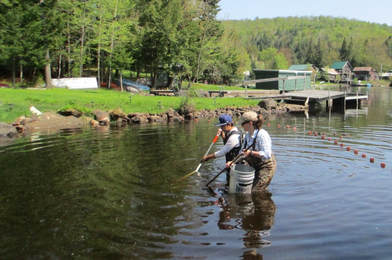 Nicolas joined Doug Carlson and Stephanie Weston, our collaborators from the NYDEC, on their sampling trip to the Adirondacks. The team is collecting fish for a genome-wide comparison of intra-specific variation, with the aim of characterizing how distinct the summer sucker (the only fish species endemic to the New York state) is genetically from the much more widely distributed white sucker (Photo credit: Doug Carlson). 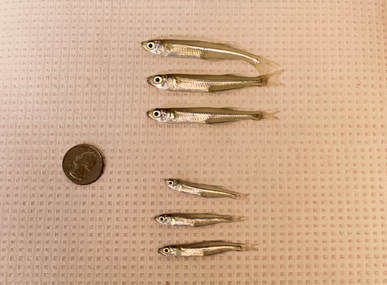 To build linkage maps for the Atlantic silverside and map key fitness traits to the genome, we had established several inter-population crosses between fish collected in Georgia and New York. The photo shows pure-bred F1 individuals raised under common conditions in the lab with parents from the two populations (top three fish have New York parents, the bottom three fish have parents from Georgia), illustrating the stark difference in growth rates. The inter-crossed F1 individuals have now matured, and our collaborator Hannes Baumann along with Maria and his team, successfully got them to spawn to form several large F2 families that we can use for mapping. Maria has spent several weeks at the Baumann Lab at University of Connecticut Avery Point to measure traits in the F2 juveniles. She has been measuring length, weight, shape, routine metabolism, and maximum sustained swim speed of a total of 282 individuals. These data will be used together with genomic data for QTL mapping (to identify what parts of the genome affect the traits) as well as for generating a linkage map to examine the recombination landscape in the silverside. Here's a video showing a busy day in the Baumann Lab
Most of the lab attended EvoDay 2018, a full-day symposium on the topic of local adaptation at Cornell’s Lab of Ornithology. Nina presented new results from our silverside work in a talk titled “Chromosome-wide footprints of selection underlying local adaptation with gene flow”.
Nicolas and Maria traveled to North Carolina and Virginia to sample silversides for our study examining selection dynamics over seasonal time scales.
The Therkildsen Lab does real-time sequencing on a tiny, portable Nanopore MinION sequencer! We are using the sequencer for an eDNA project as part of our class NTRES 3400 (Molecular Tools for Ecology, Conservation, and Natural Resource Management) taught by Nina. Eileen Randall and Kurt Jika from Cliff Kraft's Lab helped us with field sampling at two of our sampling sites so we could compare the fish species composition inferred with metabarcoding and electrofishing.
Later in the summer, we will use the MinION sequencer to generate long reads for our silverside genome assembly. We are overjoyed to announce that NSF is funding a collaborative research project to look at the genomic underpinning of local adaptation in the Atlantic silverside! Check out the project website designed by our collaborator Hannes Baumann to learn more.
We have now finished setting up our second laboratory, which is exclusively dedicated to pre-PCR work with ancient and historical samples. The room has UV irradiation at night, positive air pressure with all incoming air passing through a HEPA filter, and restricted access in protective clothing - all to minimize the risk of contamination. We are excited to start recovering DNA from cod bones excavated from archaeological sites and work with other ancient samples in the future.
Former postdoc Dr. Aryn Wilder has moved to California to start her new job as a conservation genetics researcher at the San Diego Zoo. Congratulations Aryn! We will miss you!
PhD students Maria and Nicolas presented their research at the Annual Ecology and Evolutionary Biology December Symposium. Nicolas discussed the effects of quantitative trait architecture on detection power in artificial selection experiments. Maria presented her Master’s research examining geographic variation in male and female reproductive behavior in red-eyed treefrogs, and was awarded the best first-year EEB student talk. Well done, Maria!
We're thrilled to announce that the Therkildsen lab, in collaboration with Dr. Philipp Messer, has received seed funding from the Center for Vertebrae Genomics (CVG) at Cornell University for our research using historical DNA samples to characterize the genomic basis for fisheries-induced evolution in Atlantic cod.
Maria has also been awarded a CVG Scholars Program Award in support of her work on the cytogenomics of local adaptation in the Atlantic silverside. Congratulations to Maria! The Therkildsen Lab held an informal workshop with hands-on instruction on executing our low-coverage sequencing pipeline (Therkildsen and Palumbi 2017). Dr. Gemma Clucas (Postdoc at University of New Hampshire) joined us for the workshop, which was led by our very own Dr. Aryn Wilder. Thank you Gemma for visiting, and Aryn for leading!
The Therkildsen lab is collaborating with Dr. Anne-Marie Dion-Côté (Postdoc in Barbash Lab at Cornell) to characterize the genomic architecture underlying local adaptation in the Atlantic silverside. Dr. Dion-Côté is training Maria Akopyan (PhD student in our lab) on cytogenetic analysis to characterize chromosomal variation between populations of the Atlantic silverside. Maria has been busy in the lab preparing metaphase spreads from regenerating fin tissue of silversides. Check out the photos from the lab below, including a karyotype of an individual from the New York population! adfdfa
Aryn just came back from Hannes Baumann's Lab at the University of Connecticut with silverside juveniles we had spawned and raised there. We have two sets of offspring, one from parents collected in Georgia and another from parents collected on Long Island, New York. Fish from these locations have vastly different intrinsic growth capacity and also show genetic differences in a host of other traits.
We will continue to raise these fish here at Cornell so we can do cytogenetic analysis (in collaboration with Anne-Marie Dion-Côté) to compare the karyotypes of fish from the two populations. |
Therkildsen LabNews updates Archives
April 2023
Categories |
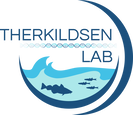
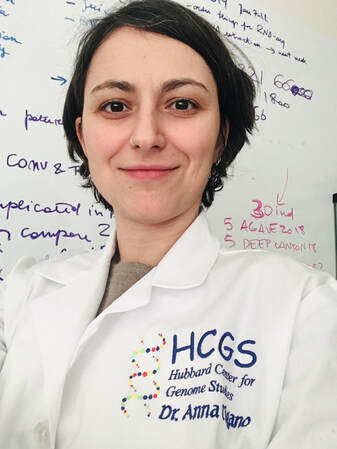
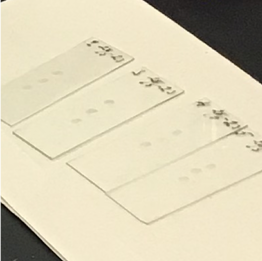
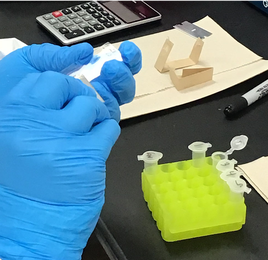
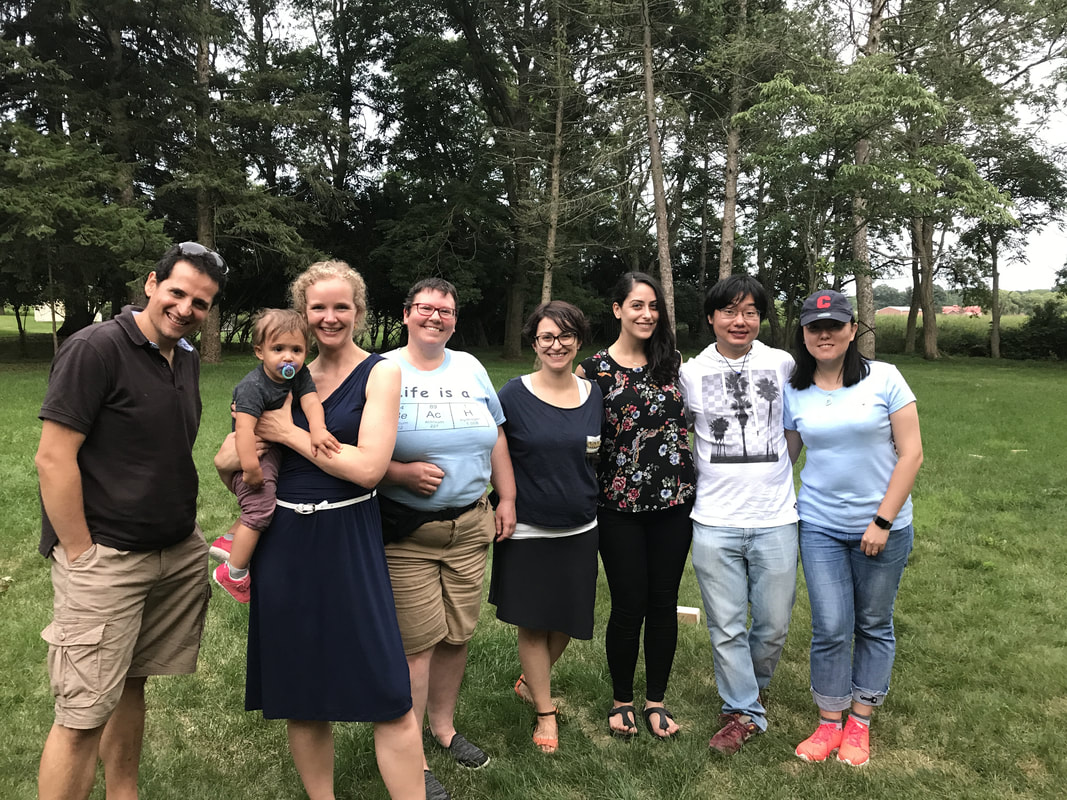
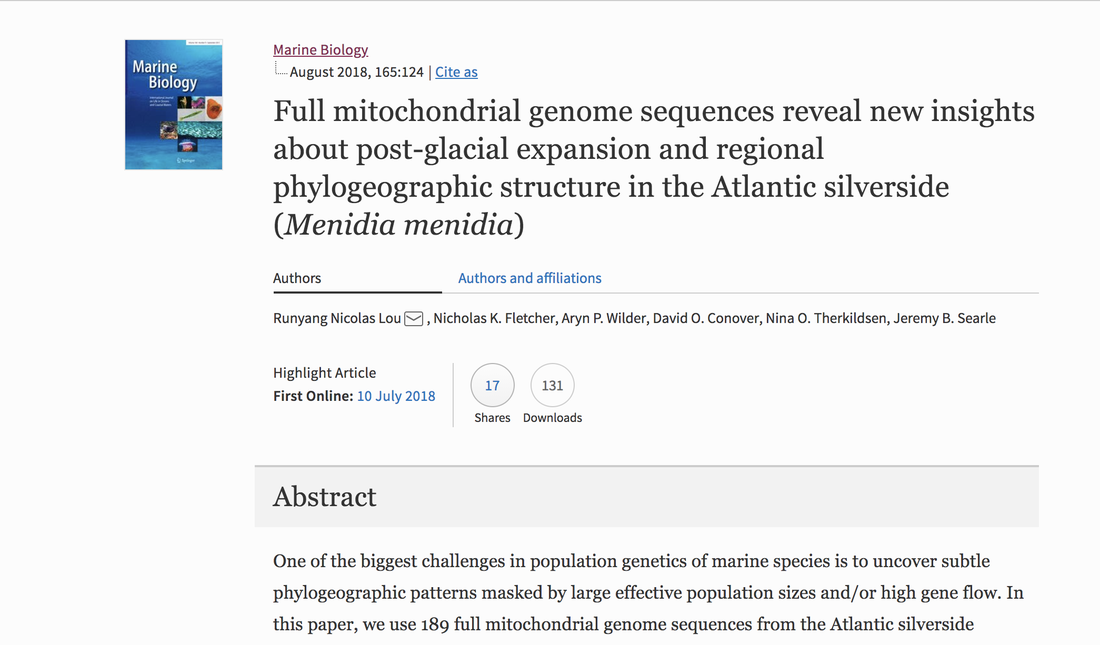

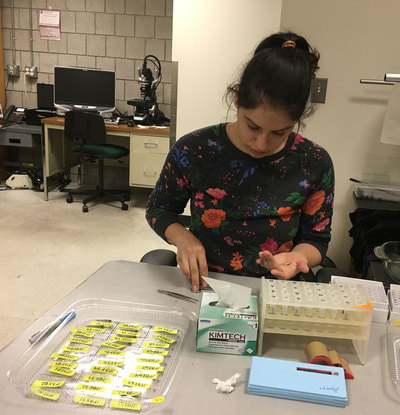
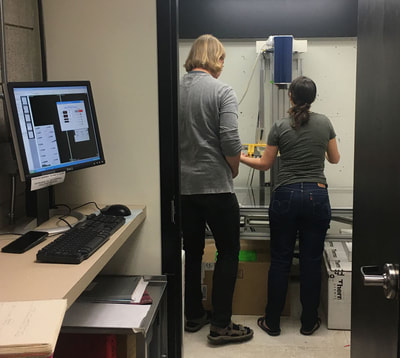
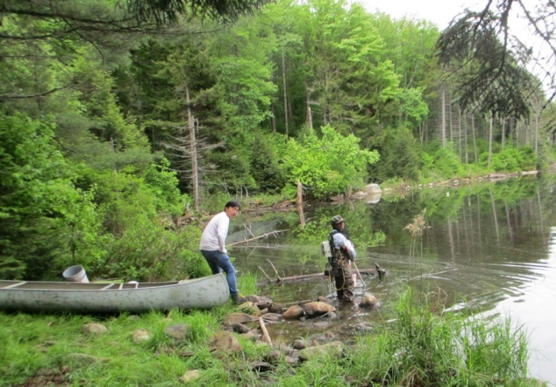
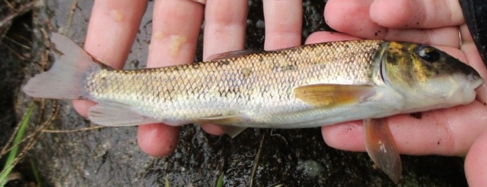
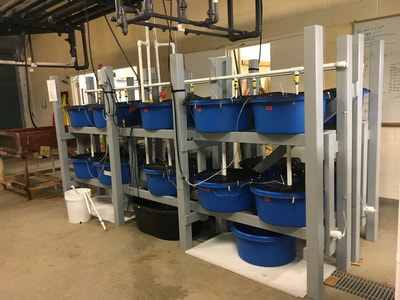
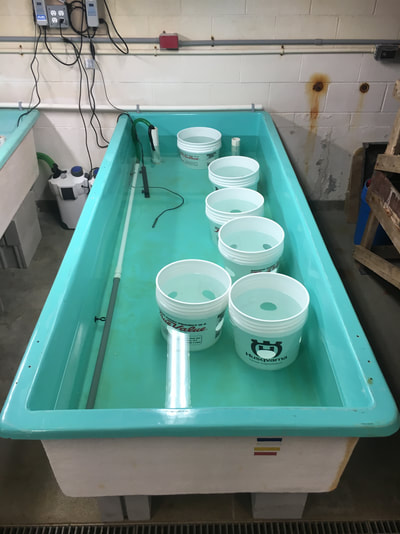
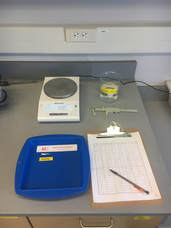
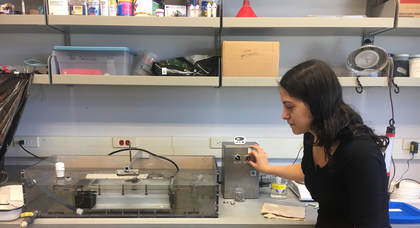
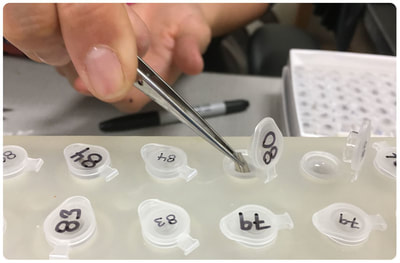
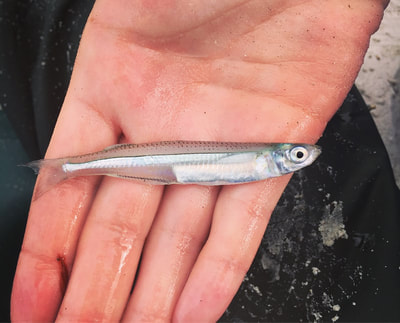
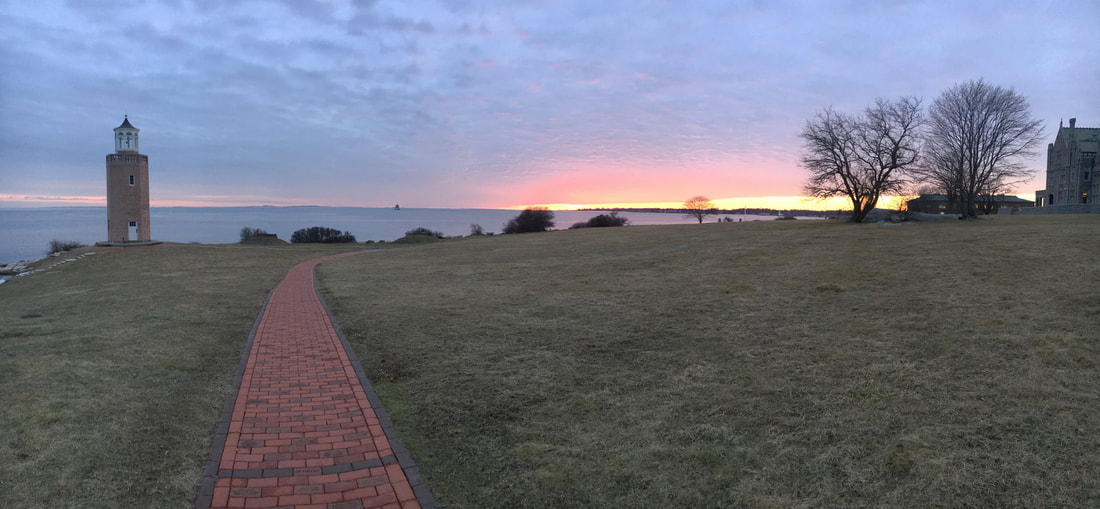
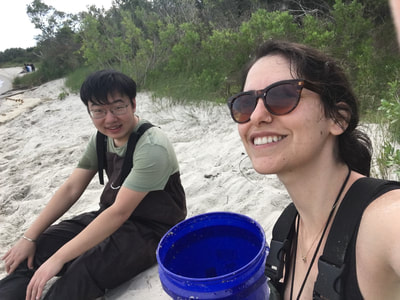
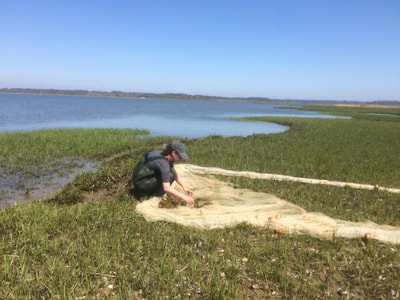
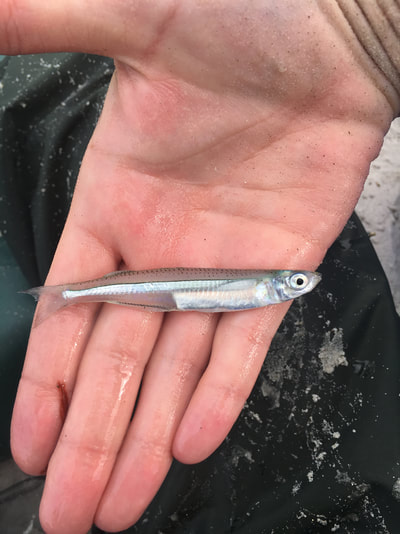
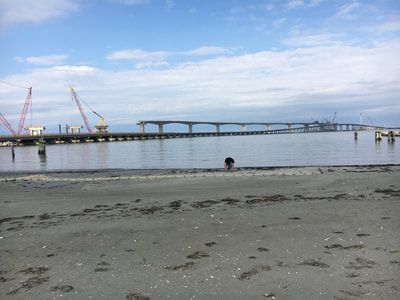
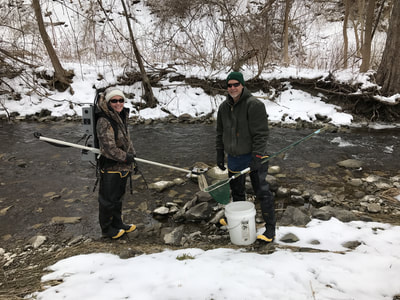
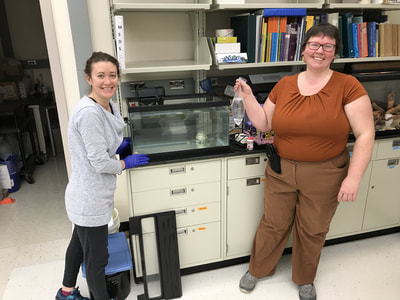
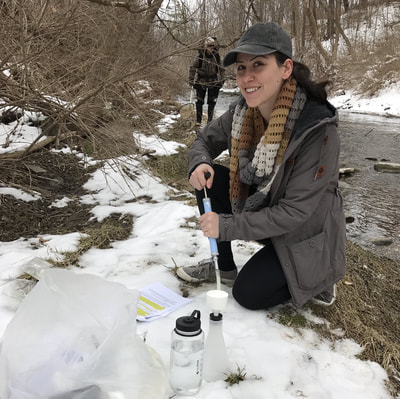
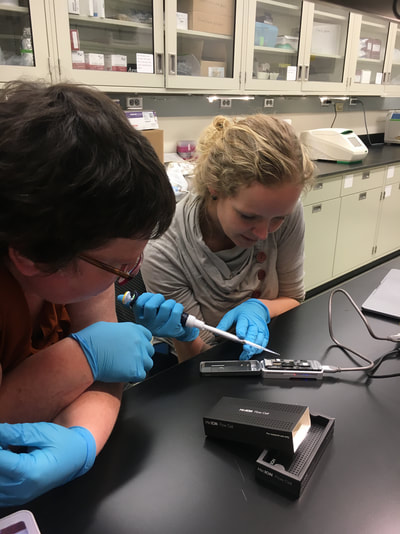
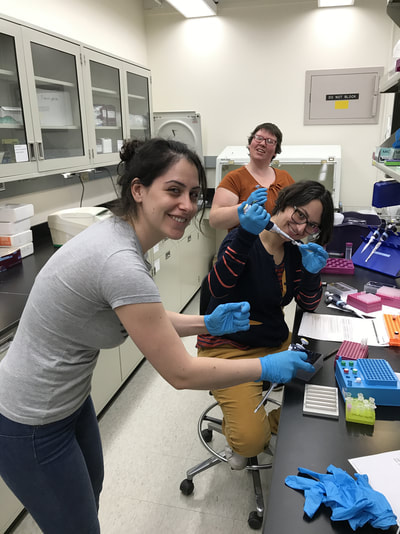
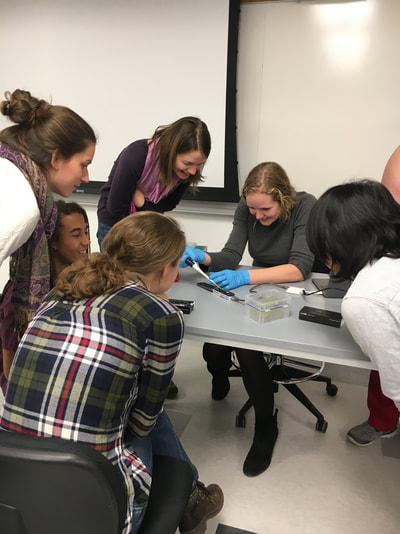
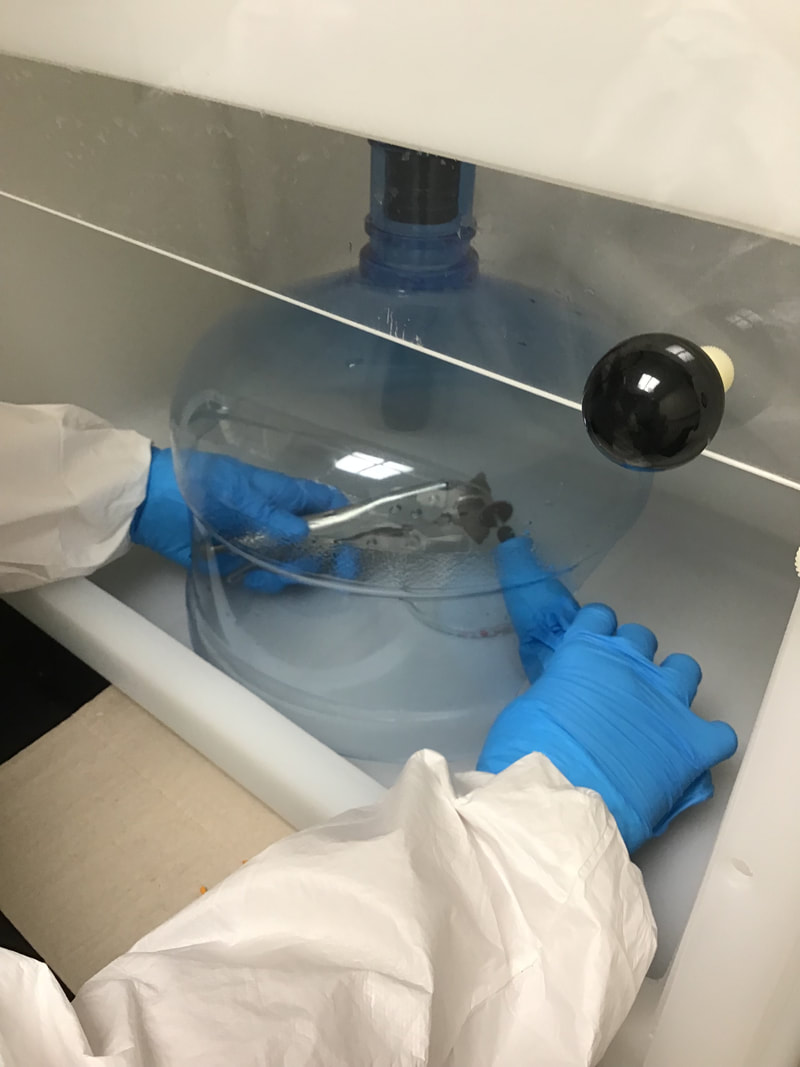
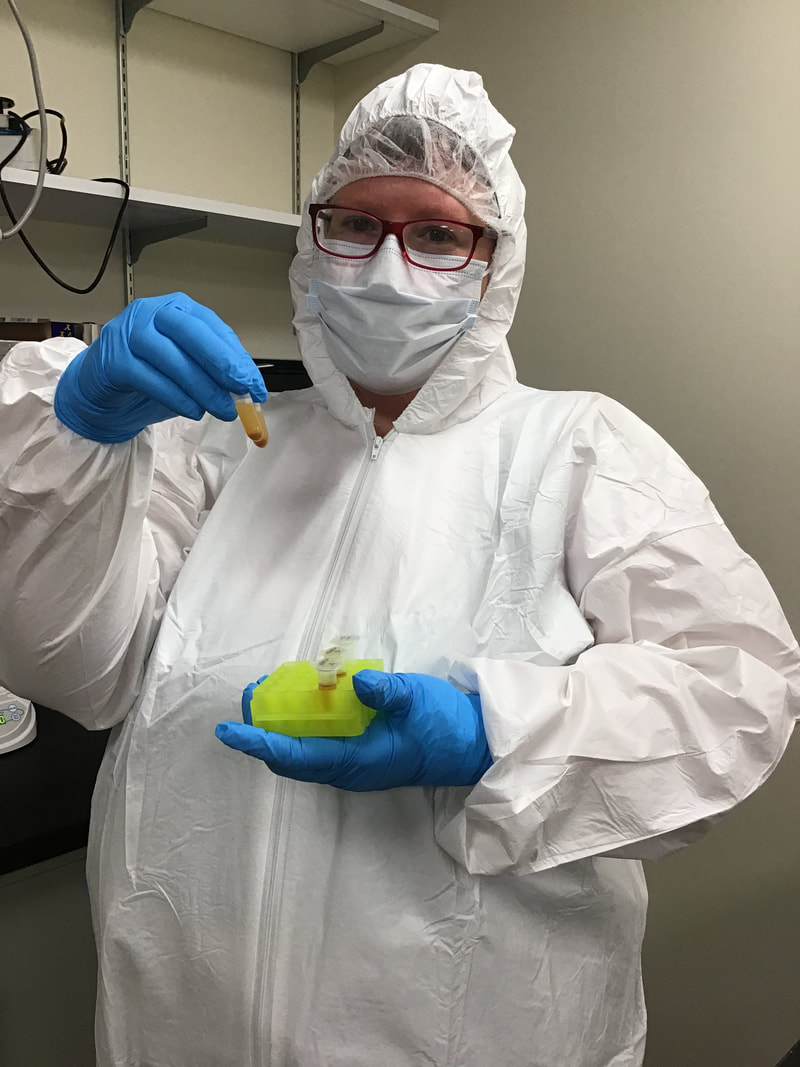
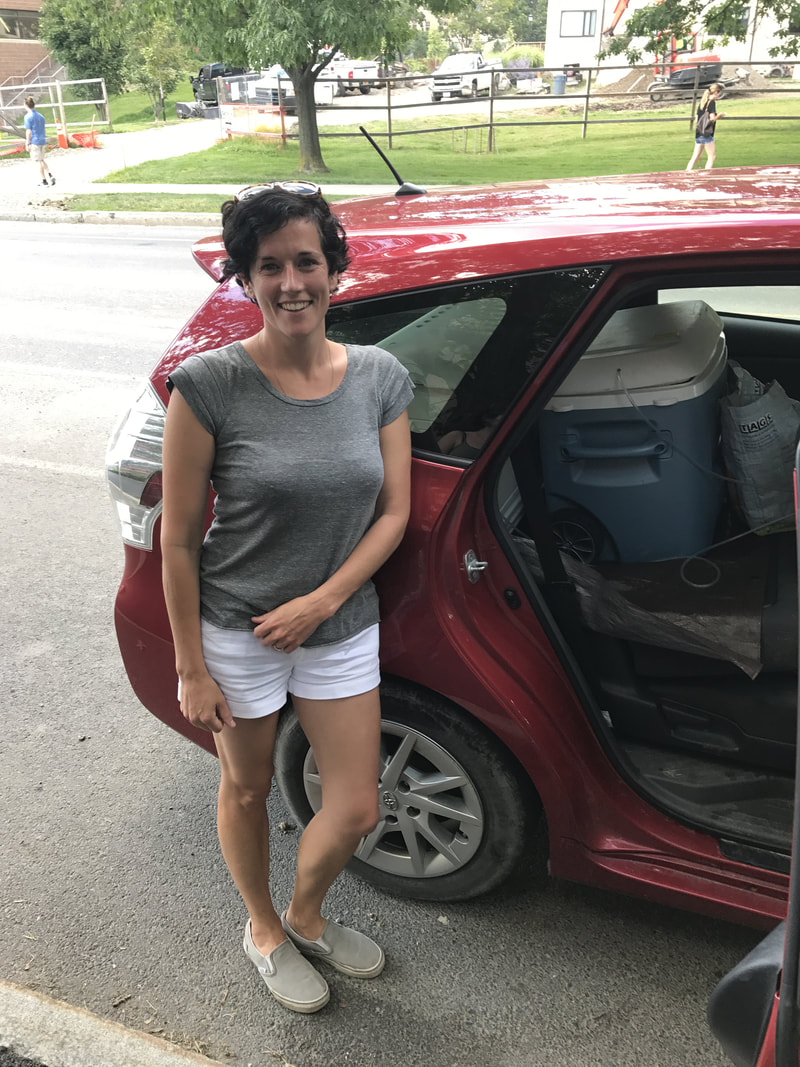
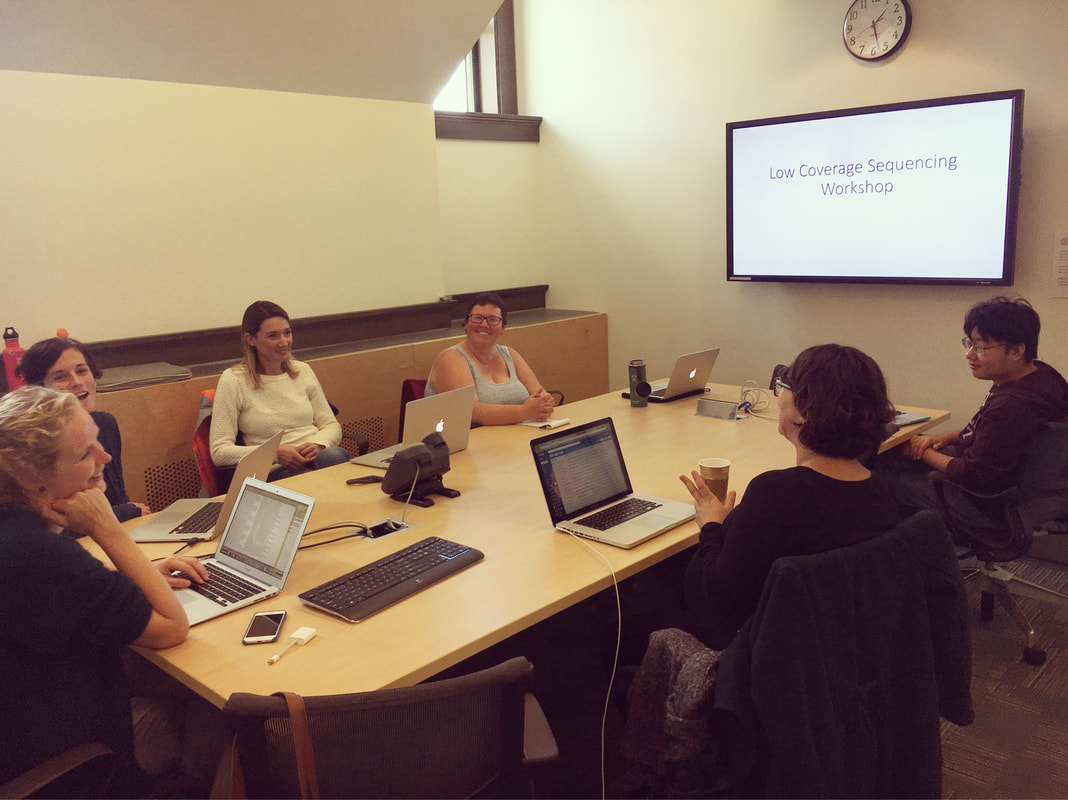
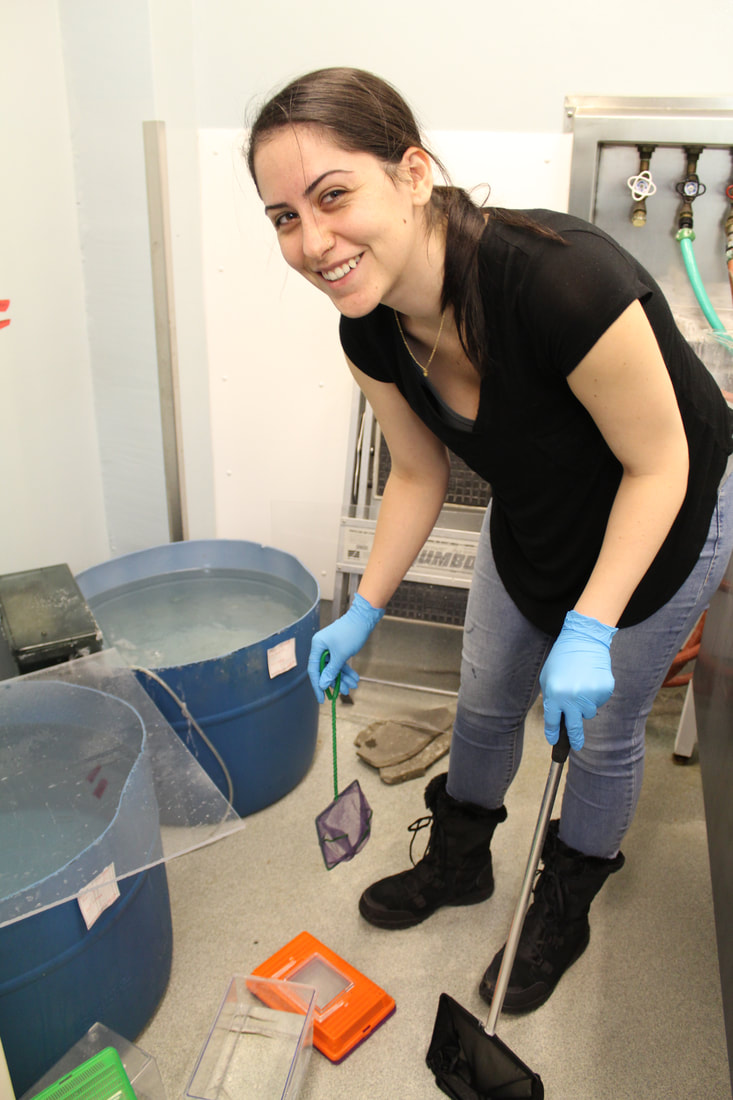
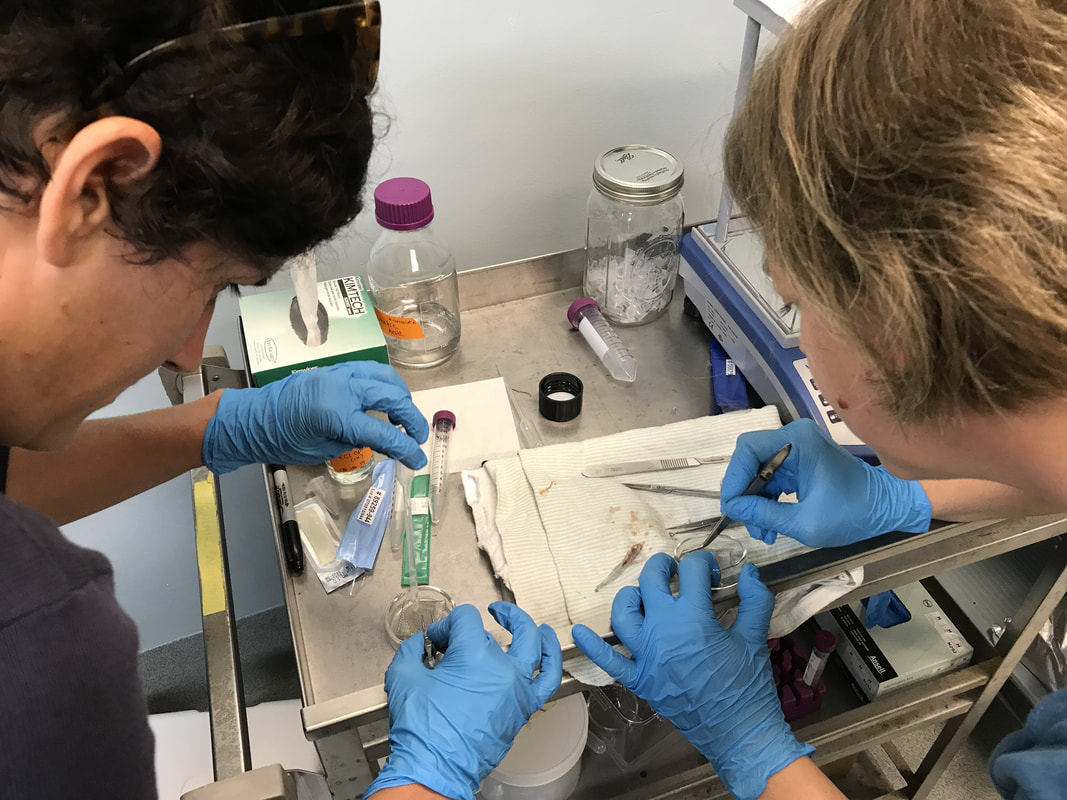
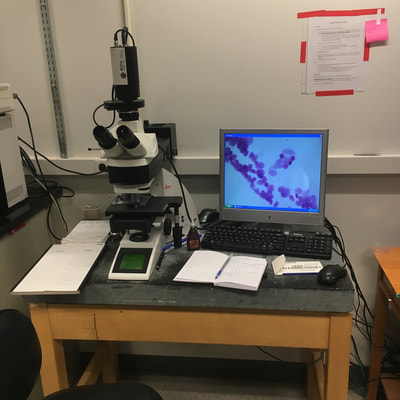
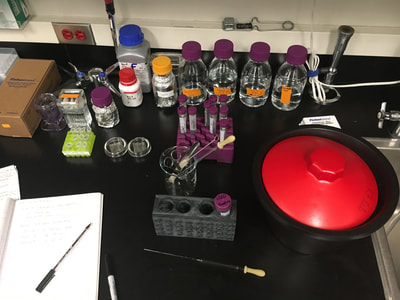
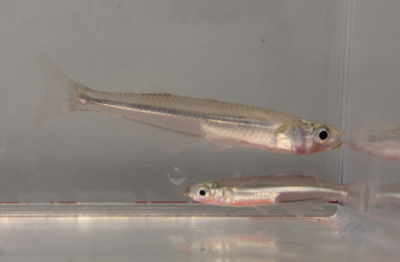
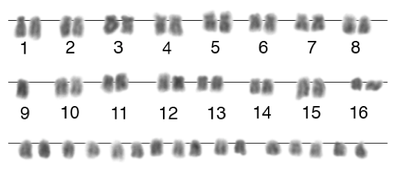
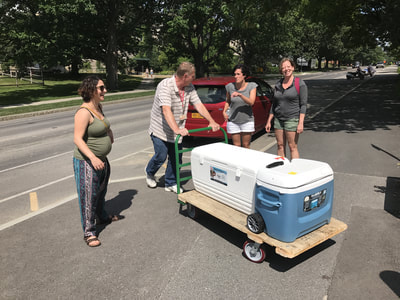
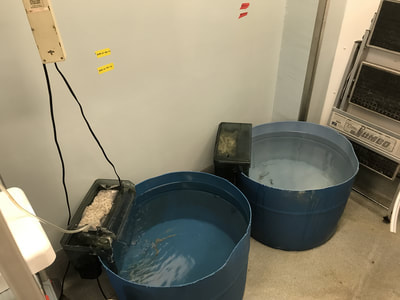
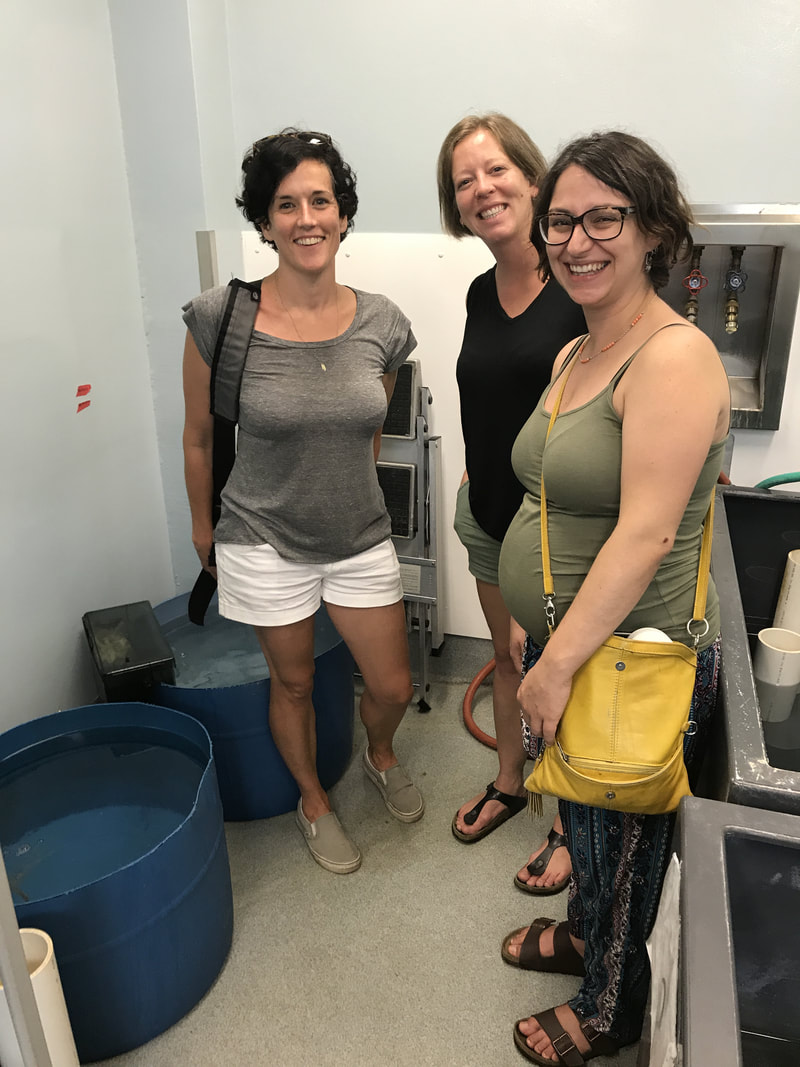
 RSS Feed
RSS Feed